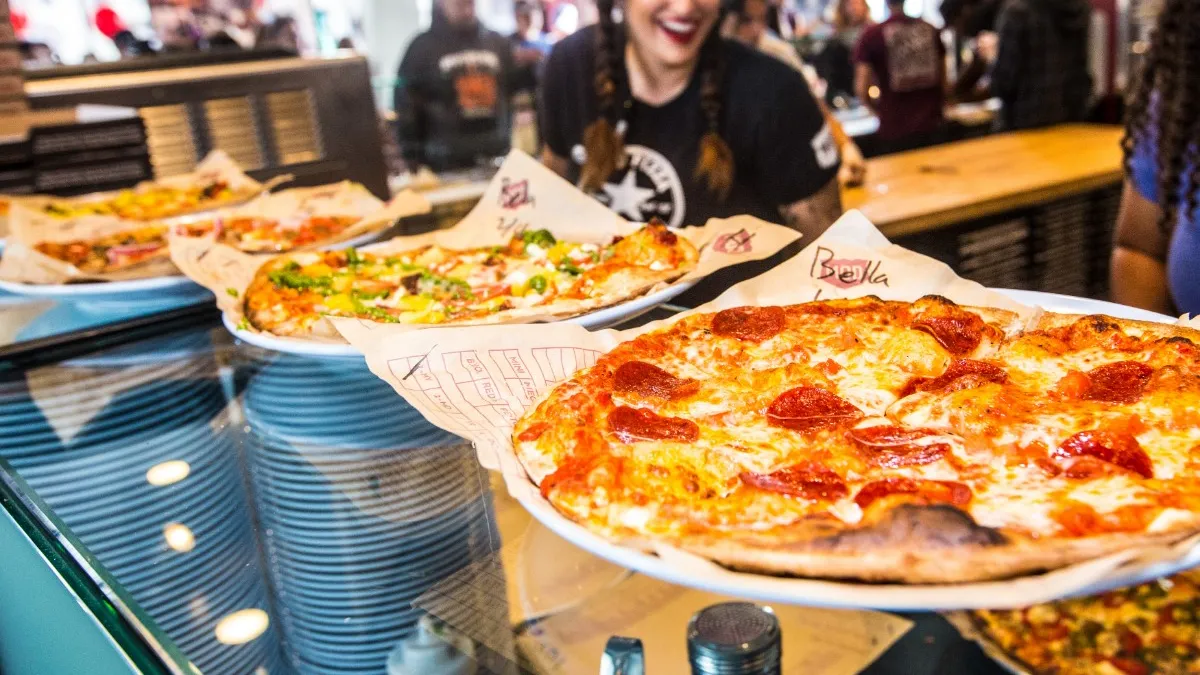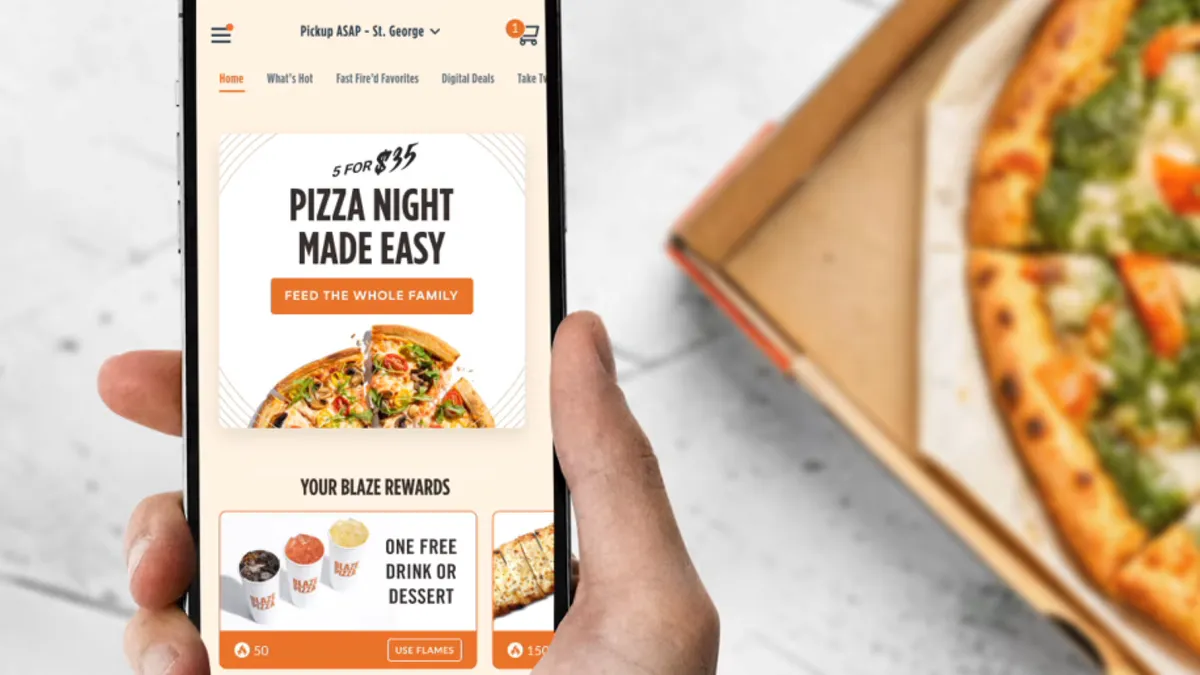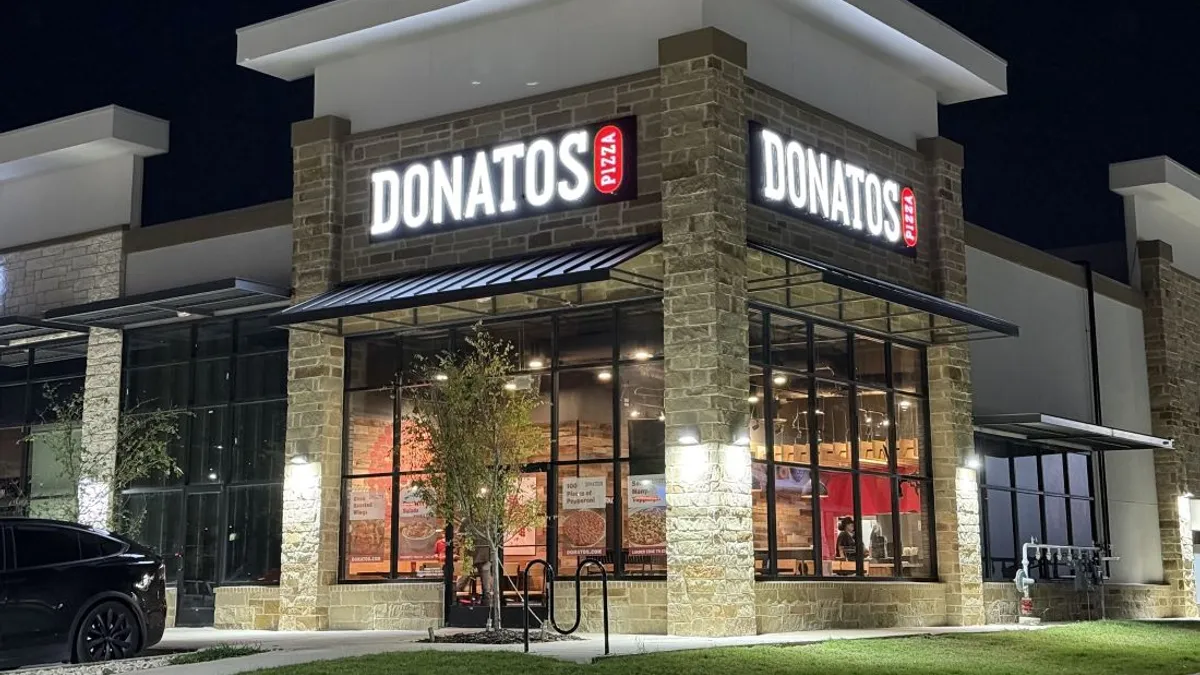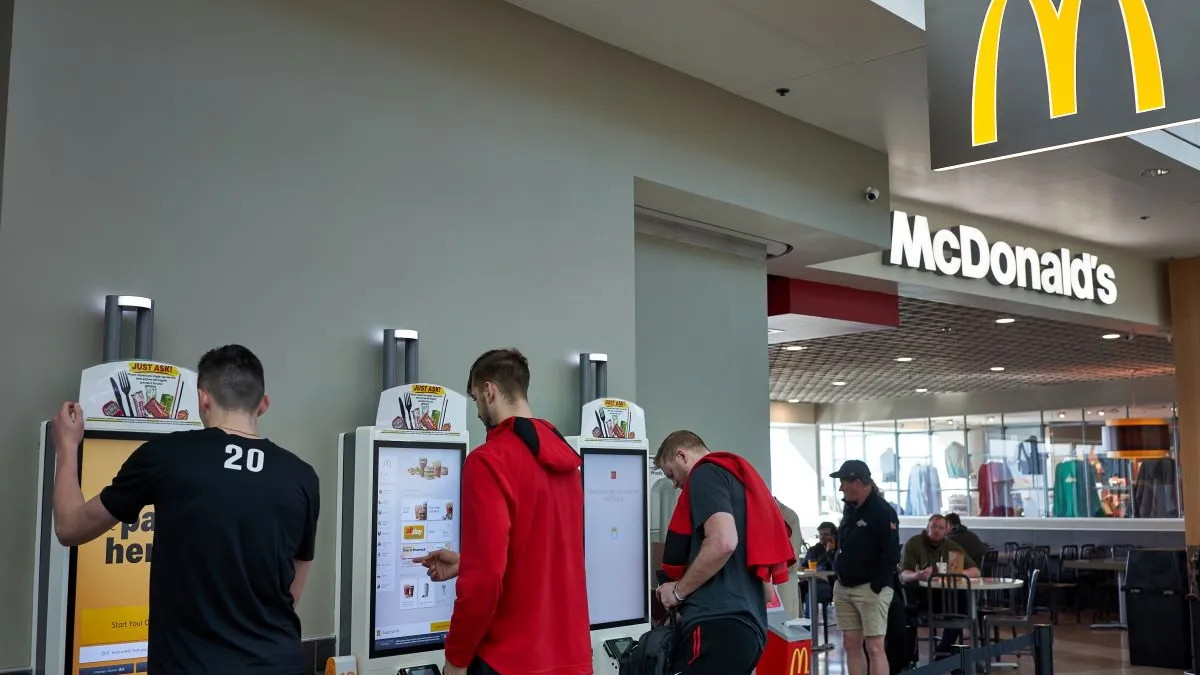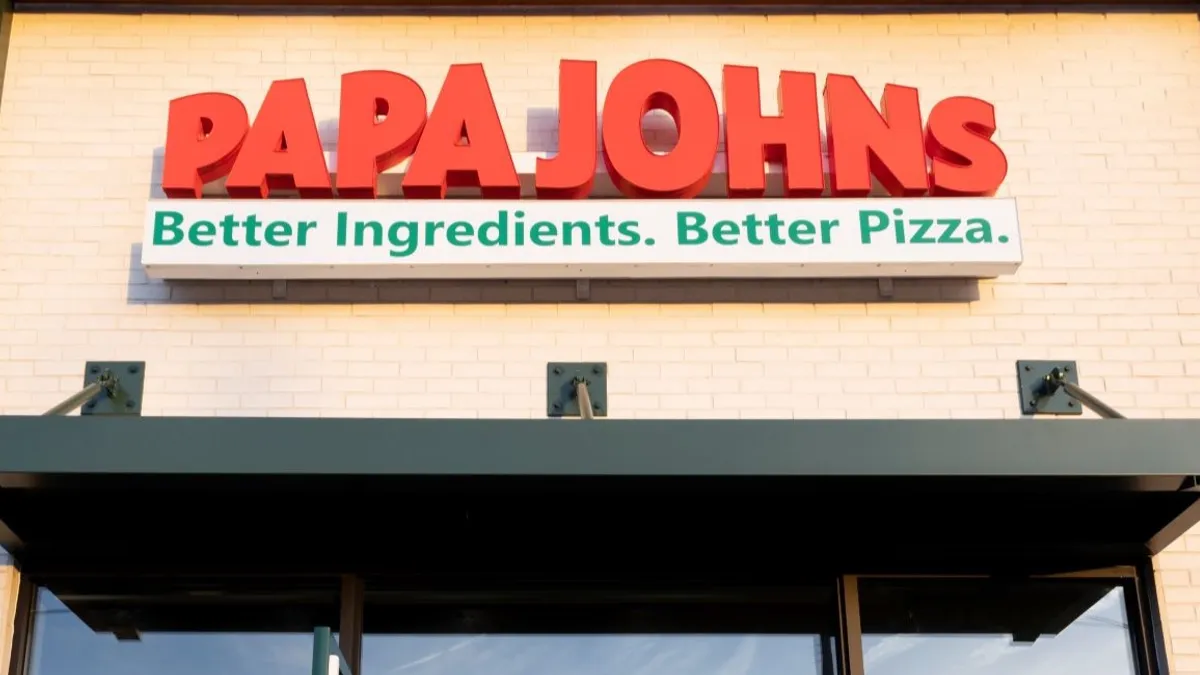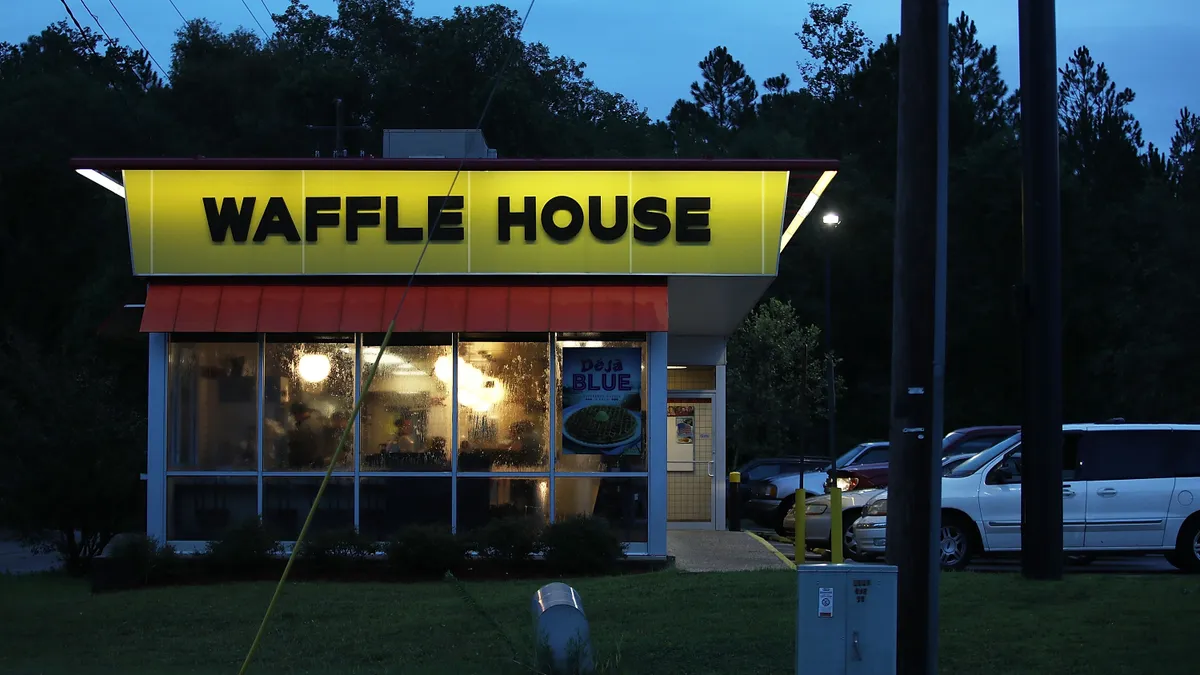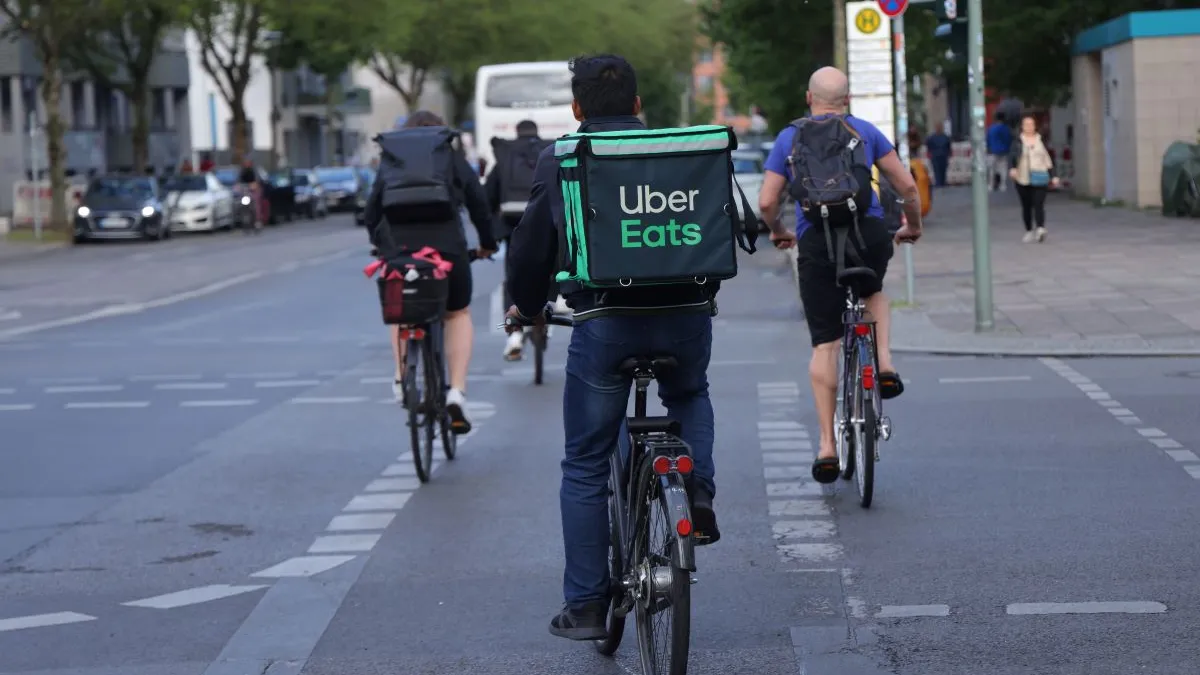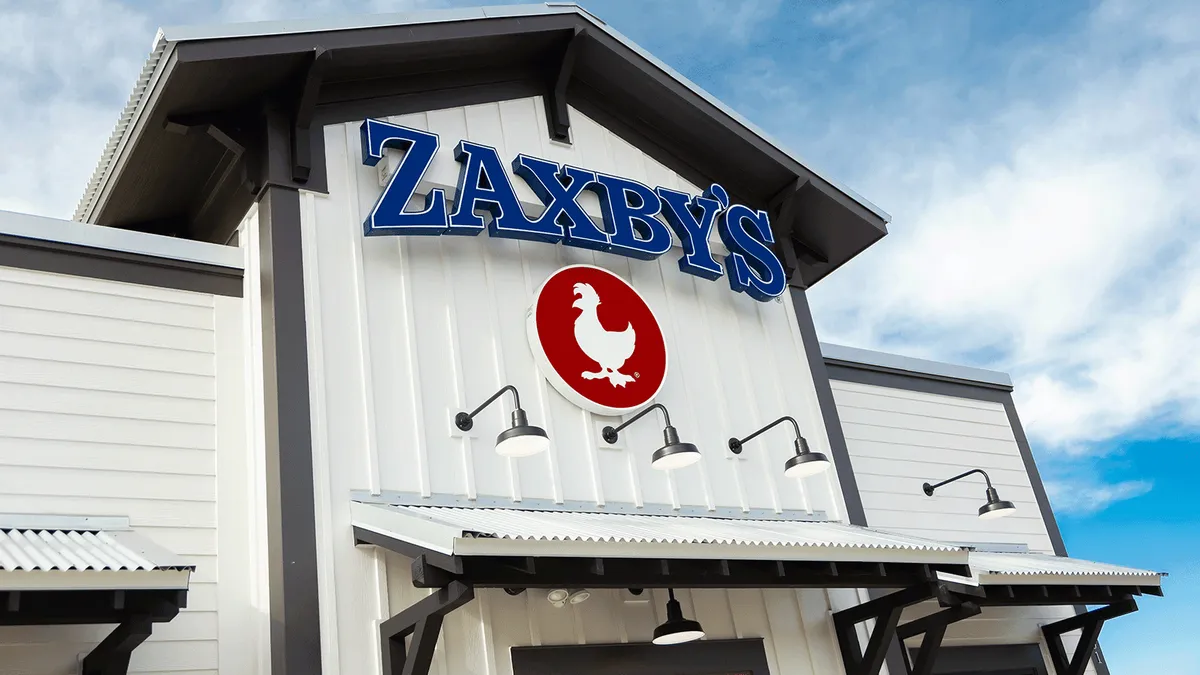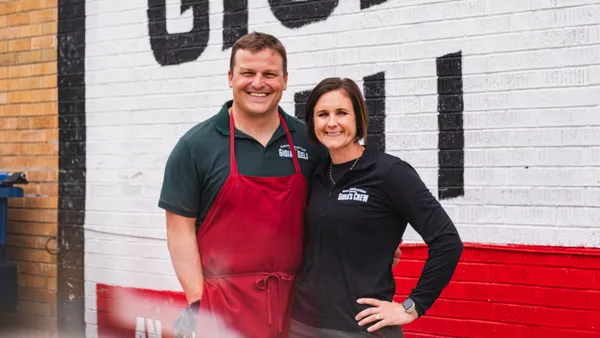MOD Pizza's cloud adoption became as fundamental as its pie ingredients.
The fast casual chain began with a startup mentality in 2008 and recognized there were enough software as a service applications available for business basics, like payroll and accounting systems.
"MOD had always been a cloud-first shop," said Tara Gambill, senior director of enterprise systems at MOD Pizza, in an interview with CIO Dive.
Having the foundation of the cloud, years before the cloud boom, gave MOD a head start when it came time to scale. However, it wasn't until 2015, MOD's leaders decided the company would grow beyond its regional roots on the West Coast.
MOD Pizza was hailed as the fastest-growing restaurant company in the U.S. in 2016 and it had the sales to back it up.
The company saw a 220% year-over-year sales increase in 2016, followed by a 44% spike in 2018, hitting the $400 million mark.
In 2017 the company added 110 locations, and last month it announced plans for a 1,000 new locations over the next five years. As of 2018, MOD has 433 locations.
The rapid growth was too much for MOD's original IT team to support. "In the early days, they had two people they called the IT department and that was really to keep the point of sales systems up and running in the stores," said Gambill.
Now, MOD's tech team is 30-people strong, with about half of them on the help desk and the other half "taking care of literally everything else," including enterprise applications, basic system administration, analysis, release management and vendor management, said Gambill.
Cloud-based pizza
MOD Pizza landed on the cloud just as the internet's bandwidth and speeds were strong enough to support business functions, highlighted by Netflix's streaming services launched in 2007. But the pizza industry already had interest in the World Wide Web.
Pizza Hut had its first online order (a large pepperoni, mushroom and extra cheese pizza) as early as 1994 on its "digital ordering hub," according to the company. By 1996, Domino's launched its website, followed by Papa John's online ordering service in 2001.
"As a 100% SaaS shop, I remind them each of these vendors are an extension of my business."

Tara Gambill
senior director of enterprise systems at MOD Pizza
The established pizza chains have the funds to experiment and invest in technology. In the last several years, these companies have adopted a tech company mindset while still delivering pizzas.
MOD's cloud-first approach was a way of "bootstrapping" the young business, said Aaron Allen, founder and chief strategist for Aaron Allen & Associates, global restaurant consultants, in an interview with CIO Dive.
Because legacy systems and cloud-based offerings started coming along the same time, "it could've proven attractive at the right time" for newcomer MOD Pizza, said Allen. With new chains, "age can sometimes be an advantage or a disadvantage" because they don't have the overhang of legacy systems to modernize but they also lack the funds for extensive technology.
MOD, coming around decades after pizza giants, like Domino's and Pizza Hut, is "more likely to adopt a later generation of technology and kind of have a jump start that way," said Allen. MOD was able to do some "generation jumping" when it came to modern technology.
MOD had an early start in cloud adoption and vendor relationships. And because it launched on the cloud, Gambill didn't have to spend time analyzing MOD's plant connectivity (PCo) or having to "figure out not just [how] to lift, but where to shift to."
A short journey to the cloud
The already-established cloud model allowed MOD to maintain its lean IT organization while still bringing in new applications.
The standard drivers of SaaS adoption — total cost of ownership, scalability, speed — were invaluable for MOD because the pizza chain "couldn't wait around a year to implement a new product," said Gambill. "We needed to run things right now."
The cloud enabled MOD to quickly implement a product, train people to use it and be ready for subsequent release management.
When Gambill joined in 2016, she came with a background in the tech industry, not in restaurant-specific technology, a caveat that would ultimately help MOD build its IT repertoire.
With new chains, "age can sometimes be an advantage or a disadvantage."

Aaron Allen
founder and chief strategist for Aaron Allen & Associates, global restaurant consultants
"When people hear cloud, they initially think, 'well I'm just going to take everything I have on-prem, that I have, that I wrote, that I customized, and I'm just going to put it in the cloud,'" said Gambill.
It's easy for those in the restaurant industry, with backgrounds outside the pure tech industry, to misconstrue the capabilities of the cloud and the ability to stack its vendors.
For MOD, "it really didn't matter, it was just a matter of how we contracted and transacted with that service provider and really what the capabilities of their platform could provide," she said.
MOD's cloud use is "kind of sprinkled in a few different places," said Gambill. The company's business intelligence (BI) stack is on Microsoft Azure because "we're a Microsoft shop, so that was naturally part of that solution."
The company also uses SAP S4 HANA for its big stack items, like ERP. Its store management platform is hosted on AWS. Using multiple cloud vendors is "actually a big part of what's helped the legacy point of sale providers keep their stronghold in terms of selling hardware" because of a misunderstanding around integrations, said Allen.
It's the challenge of every software company that sells SaaS because restaurants often try to integrate the services altogether, according to Allen. "It's really impossible."
Allen was told by one of his POS clients that the software company would have to quadruple the size of their developer team just to keep up with the integration requests they receive.
A common example is location intelligence software Foursquare, that restaurants wanted to integrate with their loyalty programs, marketing analytics, POS and so forth, according to Allen. The solution is cloud-based data warehousing, where all the data can be dumped into a single place, so restaurants don't have to integrate all their providers.
Vendor partnerships
MOD's IT organization doesn't have to worry about most of its applications because of the way they've been architected since day one. One of the inadvertent benefits of having multiple vendors is that where MOD falls short on skills, its partners pick it up.
"I do get a little soapboxy with them particularly when we enter into contract because as a 100% SaaS shop, I remind them each of these vendors are an extension of my business," said Gambill.
Relying on third parties is a difficult task for companies that argue work suffers when the paycheck is cut by another employer, questioning company loyalty. But companies like MOD see third-party partnerships as a technological lifeline.
"It's really on my vendor to manage that elasticity that we need for data, that's the beauty of it," said Gambill.
The pizza chain uses Dell Boomi for cloud-based integration, where it gets regular interactions with a Boomi account executive. Impactful interactions with partners shapes next year's ambitions. Before renewing a contract MOD decides if partners are keeping them in the loop, alerting them of new item releases or networking opportunities.
MOD goes through a semi-annual business review, where the company assesses the technical details: Does the company need more connectors and is it getting optimal use from the vendor relationship?
Having an active relationship with vendors allows MOD to support end-to-end business processes, without stifling the needs of individual departments. Boomi lets Gambill and her team wire MOD's systems together so employees can start invoicing and approval processes in one system.
From there, non-IT employees can breathe a sigh of relief. They "can get that same data in the SAP system so that [they] can actually pay the bills," she said.



